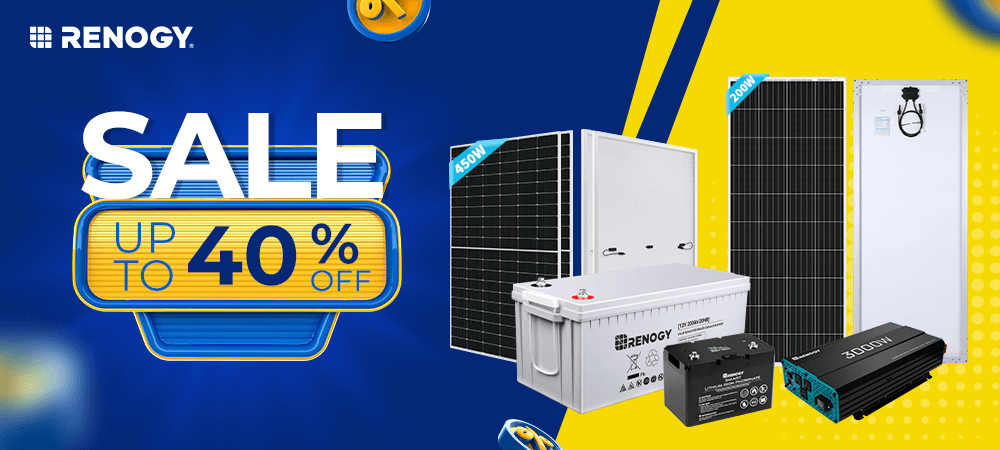DIY Solar Generator US
Building your own DIY solar generator is a great way to save money on electricity bills. Plus you get to enjoy thesecurity of a portable backup power supply during emergencies and outages.
In this article, we will cover the following topics:
- What is a DIY Solar Generator?
- Advantages of a DIY solar generator
- Disadvantages of DIY solar generators
- Is building a DIY solar generator worth it?
- How to Build a DIY solar generator
- Prerequisite Components and Tools
- Step-by-Step Process of How to Build a DIY solar generator
So if you are part of Renogy’s growing DIY community, this article is for you.
What is a DIY Solar Generator?
A solar generator is a portable, all-in-one solar installation that houses all the various solar components in one self-contained unit.
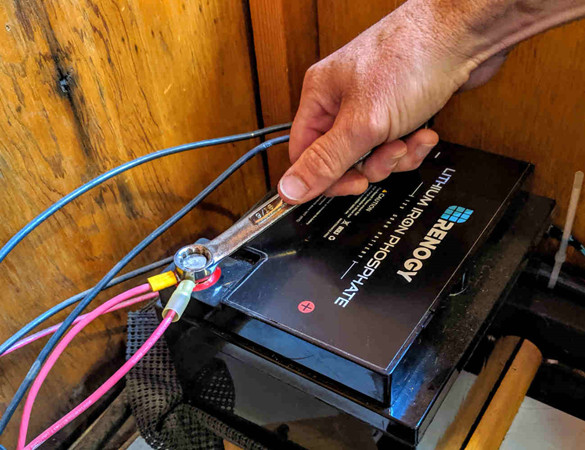
That's the biggest difference between a solar generator and a traditional solar installation where the parts are mounted and installed separately.
So what’s a DIY solar generator?
A DIY solar generator is a solar generator built by an end-user like you by assembling different solar parts into a working solar generator. Hence, the 'DIY' in the name stands for Do-It-Yourself.
The process of building a DIY solar generator is similar to buying the parts of a PC or bicycle and assembling it on your own.
A solar generator (DIY or ready-made) is comprised of 7 main components or parts:
1. Case: A sturdy case that’s large enough to house all the components you need. The case can also be waterproof depending on where you plan to use the generator.
2. Inverter: Converts the DC electrical power from your solar panels or batteries into AC electrical power used by most modern appliances.
3. Converter: Converts the AC electrical power from your grid supply or inverter into DC electrical power used to charge your batteries or power select DC appliances.
4. Charge Controller: Controls and regulates the power generated by your solar panels so that it does not damage your batteries during charging.
5. Battery Pack: Stores the excess energy from your solar panels or grid supply for use during the times when both are unavailable.
6. Solar Panels: Uses sunlight to generate DC electrical power used to power your inverter, DC devices, or charge your batteries. Note that if you are buying a ready-made solar generator, different manufacturers' solar generators come with or without solar panels.
7. Accessories: This includes the connecting wires, fuses, mounts, and other small parts needed to assemble a working solar build.
Advantages of a DIY solar generator
● Sometimes it's more affordable to build a DIY solar generator than buy a ready-made generator.
● You don’t need to hire a professional installer so you can save some money.
● You get an intimate knowledge of the solar generator and can use the acquired skills to troubleshoot and regulate the solar generator.
● It’s easier to update the generator's components as technology improves.
● You can repair the generator on your own.
● Compared to a traditional solar installation, a solar generator’s portability allows it to be used for different purposes such as RV camping, home backup power supply, off-grid construction, and many others.
Disadvantages of DIY solar generators
Building a solar generator has plenty of benefits. But be warned the process can be challenging for beginners.
An incorrectly done DIY generator construction can cause irreparable harm or damage. So it has plenty of drawbacks that turn away many a potential DIYer, including the following:
● Building a DIY solar generator can be time-consuming and challenging.
● Can be a little challenging for individuals without a technical background.
● Improper connections or component configurations can damage your property and generator.
● There is a risk of electrocution or injury to the DIYer and other users of the system.
Is building a DIY solar generator worth it?
Building a DIY solar generator is not for everyone. If you want to build a solar generator you need to be willing to invest the time and effort necessary to learn the skills and knowledge needed to build a solar generator.
Secondly, a DIY portable solar generator will often lack some of the premium features found in branded solar generators like the Lycan 5000 or Phoenix 1000. Learn more about Lycan 5000 in another article: Meet The LYCAN 5000.
Examples of features often missing in DIY generators are:
● A remote monitoring and management system or app like the Renogy One.
● A smart monitoring system that helps regulate, optimize, and protect the generator’s components from misuse and damage.
● Seamless compatibility between the various components in the system.
That being said, building a portable solar generator is a worthwhile project for you if any of the following descriptions match your situation:
● You are willing to learn and master basic knowledge about electricity and solar, such as voltage, amperage, insulation, watt-hours, etc.
● You can read, understand and follow the instructions, precautions and diagrams in the manufacturer's manuals and booklets.
● You can pay attention to detail in order to install components properly and safely.
● You are looking to save a few dollars as building a DIY solar generator is sometimes more affordable than buying a ready-made generator.
● You are looking for a hands-on project to do in your free time.
How to Build a DIY solar generator
Once you know your daily energy usage, it’s easy to determine which solar generator size you need. For example, a bigger solar generator with at least 4 kWh is ideal for powering homes. In contrast, a smaller generator is more suitable for RVs, boats, and other small accommodations.
If you still don’t know how to calculate your daily energy usage, check out this article: how many solar panels do I need?
Alternatively, you can use our super solar calculator for RVs..
In this article, we are going to build a 2.4 kWh portable solar generator that's just right for a beginner DIYer. If you want to build a bigger or smaller solar generator, feel free to choose a different set of components than the ones we chose. You can check out Renogy's solar kits for a set of affordable preconfigured components.
Required Components and Tools
All the solar parts we are going to use come from Renogy’s 400W 12 Volt Complete Solar Kit with Two 100Ah batteries.. Using a solar kit is much more convenient when building a DIY solar generator because it comes with all the parts and accessories you need to build your solar generator.
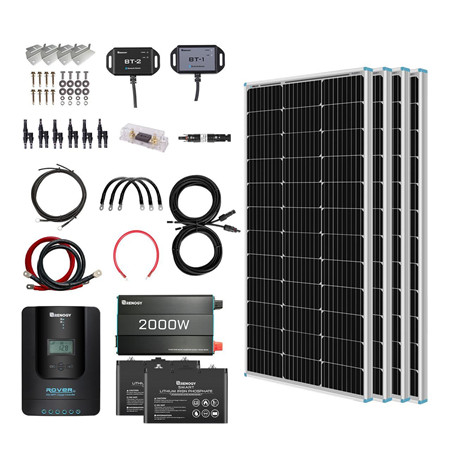
Our chosen 400W Complete Solar Kit comes pre-equipped with the following components:
1. 100W Monocrystalline Compact Solar Panels
2. 2000W PSW Inverter (Peak 4000W)
3. Rover Li 40A MPPT Charge Controller
4. 100Ah 12V LiFePO4 Batteries
8. Solar Panel to Charge Controller Adaptor Kit
9. 40A ANL Fuse
10. 10A Solar Connector Waterproof In-Line Fuse Holder with Fuse
11. Battery to Charge Controller Tray Cables for 3/8 in Lugs
12. Battery Inverter Cables for 3/8 in Lugs
13. Copper Battery Interconnect Cable for 5/16 in Lugs
14. ANL Fuse Cable with Double Ring Terminals
Besides the components that come with the complete solar kit, you are also going to need:
1. A large case that can accommodate two 100Ah batteries or bigger.
2. A utility knife
3. Phillips screwdriver
4. Wire stripper with cutter
5. Hot Glue Gun
6. Drill
5-Step Process of How to Build a DIY solar generator
Once you have gathered all the above components and tools, it’s time to put on some elbow grease.
Step 1: Test your equipment
Before beginning the final build, we need to check if all the components work as expected. The process is simple. All you need to do is connect and turn on the components without mounting them into the case.
Check out the following video to get an idea of how to test your components.
Video courtesy: ModernSurvivalists
Step 2: Cut out holes in the case
You need to cut out holes in the DIY generator’s case for the displays, connection points, and inverter’s outlets. This enables you to operate the solar generator without being forced to pry open the case.
Video courtesy: ModernSurvivalists
Step 3: Mount the Base and Components
After cutting out holes for your components, it's time to set up and mount your solar components into the case. To make the batteries fit into the bottom corner, you can use a piece of plywood that sits flush with the wheel protrusions. You can use bolts and nuts, glue, and other mounts to fix your components securely to the case.
Step 4: Wire the Components together
After fixing the components to the case, it’s time to join all the separate parts into one working system using our wires and connectors. The connections should follow the steps outlined in the following images.
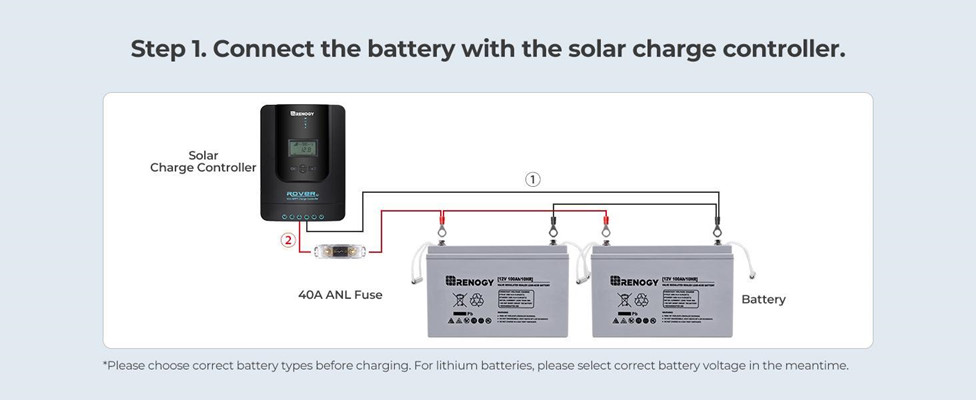
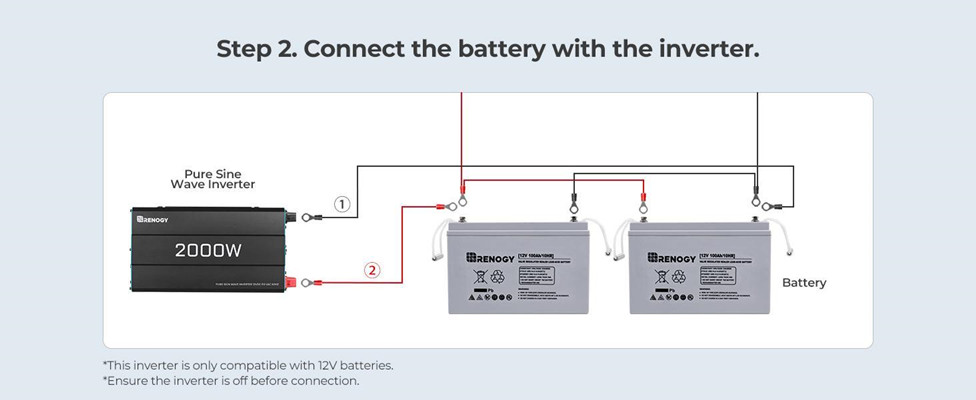
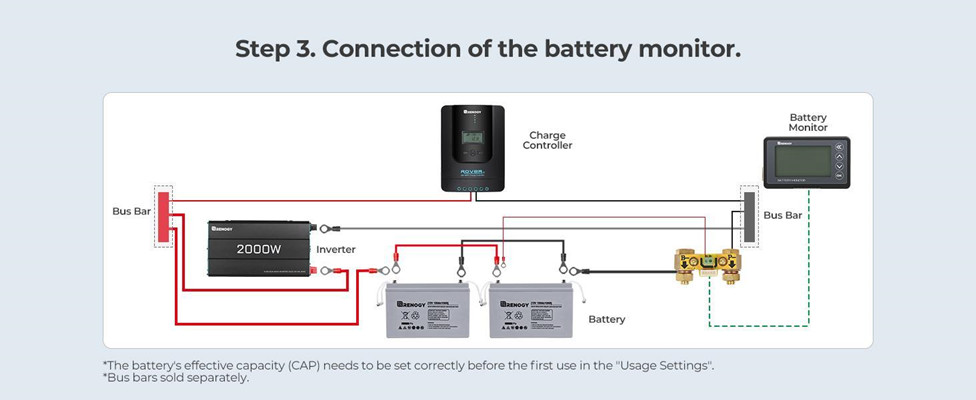
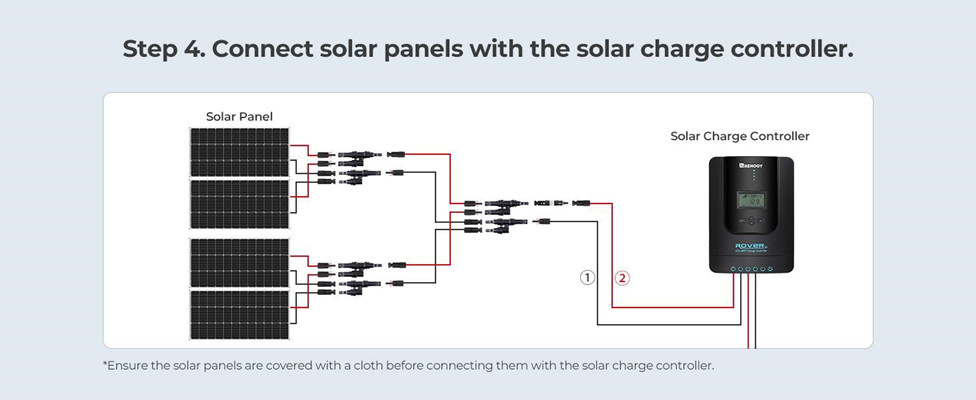
You can also refer to the video below if you need a deeper explanation of the wiring process.
Video courtesy: ModernSurvivalists
Step 5: Test the Final Product
After finishing all the drilling, mounting and wiring, you can begin the final tests to see if everything still works as expected. The final product should be stable so it can be moved around without destabilizing the mounted parts inside the case.
Video courtesy: ModernSurvivalists
DO'S and DON'TS when building a DIY solar generator
● Research the parts you will use to build your solar generator.
● Only start building once you are familiar with the basic safety rules and practices when working with electricity.
● Avoid operating electrical devices near flammable substances such as gasoline.
● Avoid buying counterfeit products. Always use good quality parts to ensure the system will work safely. Poor quality lithium-ion batteries have a tendency to explode and/or burn.
● All wiring and connections must be done tightly and insulated well.
● Research local regulations and codes to meet the local standards and procure the necessary permits.
● Make sure your solar parts, including the battery, charge controller, inverter, etc., are compatible with each other.
● Always leave enough space and ventilation to prevent overheating.
Last words, when DIY solar generators is not the best option for you, always remember that at Renogy, you can get almost everything you need for going solar.
Related articles:
What is a wholehouse solar generator?
What Is A Whole-House Solar Generator?
Solar Generators For RV Camping: A Complete Guide
Pros & Cons Of Solar Generators
How To Properly Size A Backup Solar Power Generator For Your Home


